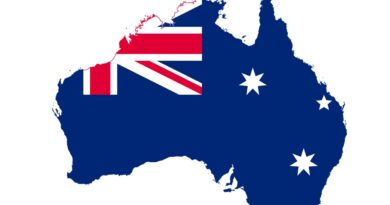How Induction Heating Save Us from Global Heating
Making 2030 Target’s A Reality – Induction Heating to save us from global heating
A new form of energy production known as Induction Heating is set to take the world by storm in the coming years and help us finally make the Paris 2030 targets a reality.
A Nevada based company, Eco-Gen Inc has pioneered the use of electromagnetic induction and reapplied it to steam generation using their patented JouleBox technology. The technology, which has been used in metallurgy for 70 years, has been modified and combined with revolutionary new IP to harness the energy of the electromagnetic spectrum in a way that generates outsized amperage to drive the induction process within a dedicated pressure vessel known as ‘The Kettle’. Inside the kettle, all the amperage generated by the coil is converted into heat energy via a workpiece made from Haynes 235, a highly resistant alloy, and this heat energy is absorbed by vast quantities of distilled water housed within the pressure vessel. The water is then converted to saturated steam via the process, and leaves the vessel directly into a steam turbine of either 2.5MW or 7.5MW of gross output, before cycling back into the pressure vessel via Eco-Gen’s patented heat exchangers and two distillation tanks.
The JouleBox system delivers a COP of approximately 10, meaning that the system only requires 250kW of power to drive the 2.5MW turbines, enabling a net usable output of over 2.2MW for the smaller units. By using the exergy of the energy reservoir to supplement the 250kW of energy recycled back into the system from the turbines, the COP of 10 ensures that Eco-Gen’s new product is a best-in-class renewable energy technology that will enable the world to start producing green energy power in a way that is efficient, location independent, and applicable to all forms of power generation in a way that no other existing technology is capable of. As such, the Eco-Gen jouleBox, designed by founder and technical Director Paul Boaventura Delanoe, rekindles the possibility of reaching the emissions targets as set out in the Paris Accord.
As things stand, the world is on course for a 2.5˚C rise in temperatures, which the IPCC concludes would lead to devastating levels of climate catastrophe, resulting in a barely comprehensible loss of human life, as well as a continuation of the dramatic loss of species we are all seeing. In addition, the economic consequences will be so vast that it’s difficult to foresee how our way of life won’t be dramatically affected.
This rise in temperatures is far in excess of the 1.5˚C the world aspired for when it came together to agree targets under the Accord. Targets which the IPCC continue to insist are necessary if we wish our future world to look anything like the present.
However, due to the various challenges in scaling up our existing portfolio of renewable energy technologies in a way that makes them compatible with global demand, at a price point we can all afford, the vast majority of countries have been extremely reluctant to commit to anything more than that which will limit average temperature rises to 2.5˚C, and the most authoritative voices are claiming that we literally have just a few years to reset the trajectory in order to make 1.5˚C a reality.
So why does the Eco-Gen JouleBox promise so much in terms of our ability to meet these targets?
One of the great constraints of existing technologies is their reliance on local conditions for their power. However, these may be located far away from where the end user needs the electricity resulting in significant, and often cost prohibitive levels of infrastructure, as well transmission losses as the current is stepped up and then down in order to carry it large distances.
Then there is the fact that these power sources tend to be very intermittent, meaning production output is neither predictable, nor reliable. This requires hugely inefficient, expensive and environmentally damaging storage technologies such as lithium ion batteries.
Even in the case of hydro, where output can be controlled by dams, rather than batteries, seasonality issues mean that many countries have found themselves reliant on neighbouring countries for their electricity generation during times of drought.
The advantage that Paul Boaventura’s Eco-Gen’s JouleBox has is that it is capturing energy from the energy reservoir that surrounds us at all times. It therefore overcomes the challenge of needing to be sited in particular areas, and because the electromagnetic spectrum is constant, there is no issue with the intermittency of the power source, thus making it both predictable, and reliable, with no requirement for expensive storage technologies to be bolted on.
That therefore enables national power companies, utilities, and industrial clients to place the technology wherever it is most convenient and efficient to do so, reducing much of the transmission losses that continue to be under-reported by most commentators.
There is also a major land issue, due to the enormous footprint of all renewable energy technologies, which is a serious problem for smaller countries or those with high population densities. However, the JouleBox can produce 70-100MW of output for every acre of land it uses, depending on the power plant configuration used, liberating all users from the time and cost intensive demand of finding suitable land for it, and all of the feasibility studies that that usually entails. Indeed, a number of Eco-Gen’s early adopters are positioning the tech at existing distribution substation locations to take over from diesel generators as it is a fraction of the cost, and comes with no environmental cost either.
Perhaps most pertinently given the acuteness of the 2030 target shortfalls, the JouleBox can be manufactured, shipped, and installed in just six months. This means that hundreds of gigawatts of additional renewable energy power can be installed by 2030, enabling the world to align its production with its stated objectives.
Indeed, Eco-Gen founder and Technical Director, Paul Delanoe claims that this technology “will not only enable us to catch up with 2030 targets, but we could reach our 2050 targets by 2035.” If it’s as good as all the reports say it is, then maybe Eco-gen’s Induction Heating JouleBox system really will save us from global heating.




